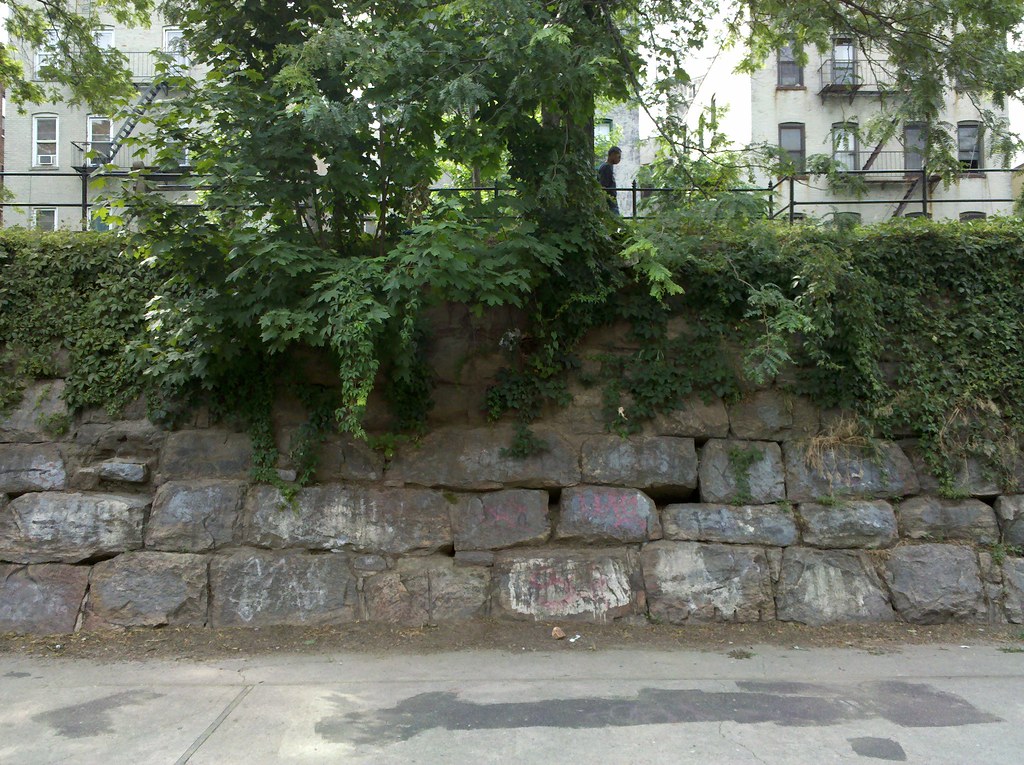
Encased inside these stone blocks here in the Bronx lies a marvel of engineering, perhaps the most important work of infrastructure in the entire history of New York City: the Croton Aqueduct.
By the 1830s, there was a serious shortage of fresh water in Manhattan. The Hudson and East Rivers are brackish, and much of the island's limited amount of surface and groundwater had been contaminated with sewage and industrial waste. As a historical sign in a nearby playground puts it: "What if, each morning, to get a drink of water, you had to take your bucket and walk six blocks to the public well where you would wait in line for some water? And what if the water you got smelled so foul that you might have to douse it with a generous splash of whiskey to cover its taste?"
These unsanitary conditions facilitated outbreaks of cholera and yellow fever, and the overall scarcity of water made it difficult to fight the fires that were becoming more and more numerous as wood-framed houses proliferated across the city.
To remedy these increasingly critical problems, the city began constructing a massive water supply system in 1837: a gravity-fed aqueduct that would run 41 miles from a newly created reservoir on the Croton River in Westchester County all the way down to Manhattan.
The aqueduct opened in 1842, and the occasion was marked with much fanfare. There were parades, speeches, songs (such as "The Croton Ode", quoted in the title of this post), and a 50-foot jet of Croton water spouting from a fountain in City Hall Park. Many notables were on hand for the ceremonies, including President John Tyler and two former presidents, John Quincy Adams and Martin Van Buren.
Within a few decades, however, the aqueduct could no longer provide sufficient water for the rapidly growing population, and a second, larger one was built, also carrying water from the Croton Reservoir. The original Croton Aqueduct is no longer in use, and the city has built new supply systems that bring in water from the Catskill Mountains. The second Croton Aqueduct still supplies about 10% of the city's water, although, as we learned earlier, it's currently offline pending the completion of a filtration plant.
And now the Old Croton, enjoying a lengthy retirement after its storied career, is largely a place of recreation. Hiking trails and walking paths follow much of its course; in fact, you can see a fine bipedal gentleman taking his afternoon constitutional atop the aqueduct in this very photo.
I'm walking every street in New York City.
This is the counterpoint to my walk across the US. Instead of seeing a million places for just a minute each, I'm going to spend a million minutes exploring just one place. By the time I finish walking every block of every street in all five boroughs, I'll have traveled more than 8,000 miles on foot — all within a single city. Details!
Email me at matt@imjustwalkin.com
Subscribe to my email list
Maps: Progress | Photos
Your donations allow me to keep walking full-time. If you think what I'm doing is valuable and you'd like to offer some support, I would be very grateful. On the other hand, if you think I'm a worthless bum, feel free to email me and tell me to get a job, bozo. Both are excellent options!



Correct. The original one in brick still stands, and the area in the Bronx called High Bridge is where the first Aqueduct arrived, the tower there was used to build pressure.
The whole system traces its way back to Hamilton. Oh and Van Buren happened to be a New Yorker, from upstate, also the second fellow to survive the administration of TJ, the other being Gallatin. Van Buren is descended from a family of Dutch settlers. And perhaps the first one to have a completely boring administration in which very little happened. The Croton Reservoir is still active now called the New Croton Reservoir.